
By
Editor
Updated on
Let’s be honest – everyone deserves a break from work sometimes, even if it is a small one.
And if you are planning to take such a break, then good for you! But do you have any plans about where or how you want to spend this break?
Yeah, this is where many people have trouble since a good itinerary is key to enjoying a vacation. Without it, you might as well spend all that time at home doing mundane stuff.
Surely, you wouldn’t want to do that now, would you? That is why you need to check out this guide, where we have discussed a detailed one-week Itinerary for visiting Cornwall.
But why should you visit Cornwall, out of all places, and what are the different things you can do there? Well, these are some of the questions we have addressed here. So, keep reading to find out more!
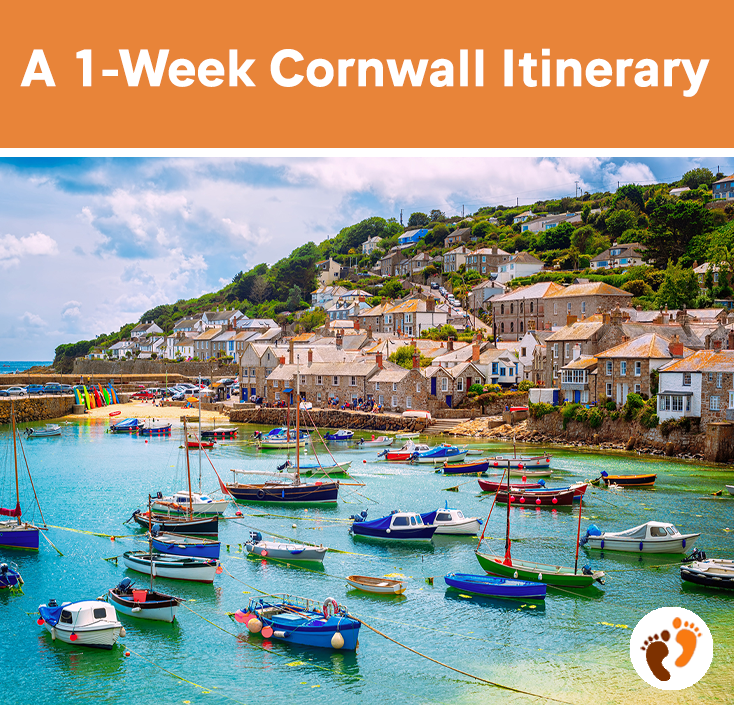
Where Is Cornwall?
For those of you who haven’t visited Cornwall (yet), let’s briefly discuss where it is located. This English county is situated on the south-west corner of Mainland Britain.
From a geographical standpoint, it is an elongated peninsula that is surrounded by the waters of the Atlantic Ocean on three sides – west, south and north. On the east, it is bordered by the English county of Devon.
How Can You Get To Cornwall?
The towns and cities of Cornwall are well-connected with the rest of England by rail, road and air. This county is located around 230 miles from London, which means that it will take you about five hours if you travel by road.
But if you want to save some time, you can take a train ride from the capital. And those who live further away can travel here by air, landing at Cornwall Newquay Airport.
Why Should You Go To Cornwall?
Now, let’s address one of the most important questions – why should you go to Cornwall when there are many other places to go to? Well, we can give you several reasons why you must visit this county.
1. Pristine Beaches
For starters, Cornwall has a long coastline, which means that there are numerous beaches and seaside towns spread throughout the county. Not only that, but you will also find an excellent beach culture here, along with everything that is associated with it. Because of this aspect, it attracts a large number of tourists from all over the world every year.
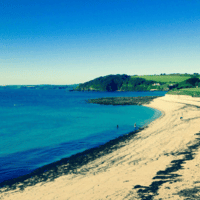
2. Beautiful Landscapes
Besides beaches, Cornwall boasts charming countryside that is perfect for a peaceful getaway. There are numerous rolling grass plains and moors where you can find some peace and tranquillity. Apart from that, there are picturesque villages, farmlands and gardens that you can explore.
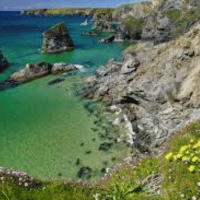
3. Rich History
Cornwall also has got a rich heritage, which makes it an appealing destination for people fascinated with history. In fact, it might even bring out your inner historian, even if you are not that big into history!
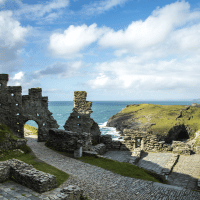
4. Comfortable Climate
Aside from the above aspects, Cornwall has a temperate climate that is characterised by mild winter temperatures and cool, breezy summer seasons. You will rarely find extreme weather conditions here, which makes it a favourable tourist destination. Likewise, the skies remain clear and sunny for the most part of the year, which is a stark departure from the dull, cloudy weather prevalent everywhere else in England.

A Detailed Itinerary For Your One-Week Trip To Cornwall
As you can see from this above discussion, Cornwall has something for almost everyone. Therefore it is the perfect destination for casual tourists and hardcore travellers alike. Furthermore, the accessibility options and favourable weather give you all the more reasons to visit this county for your week’s trip.
But now we get to the main question – what should your travel itinerary to Cornwall look like? That is just what we have discussed in this section. Below, you will find a brief outline of a typical Cornwall travel itinerary:
- Day 1: Hike on the Bodmin Moor, visit Charlestown Port and the museum
- Day 2: Visit Tintagel Castle, explore the fishing villages around Port Isaac and Boscastle
- Day 3: Take a beach trip to Newquay
- Day 4: Visit the Eden Project
- Day 5: Take a trip to the Lizard Peninsula, visit St. Michael’s Mount
- Day 6: Visit the Geevor tin mine museum, Mousehole and Land’s End
- Day 7: Go on a coastal hike
Of course, this is just a suggested itinerary – there are many other places in Cornwall that can be included in this seven-day plan. In that scenario, you will have to change the above itinerary accordingly.
To be honest, if you wish to explore the entirety of Cornwall, you will need more than seven days. However, the plan we have suggested is an ideal one when all things are considered. It covers all the popular destinations that can be visited in a week’s time. In the sections below, we have discussed some of the key locations in greater detail.
1. Bodmin Moor
Covering around 80 square miles, Bodmin Moor is famous throughout the UK for its lush, grassy landscape, which is dotted with numerous granitic outcrops.
These outcrops, which are known as “tors”, are beautiful to look at, and they offer great photography opportunities. After hiking for a good while, you can take some rest in the shade of these tors and click some pictures while you’re at it.
There are roughly a thousand of these tors all over the moorland. The highest one is Brown Willy, which stands at 1,368 feet. Believe us – the view you will get from the top of it is pretty remarkable.
The nighttime at Bodmin Moor feels quite haunting and adventurous too. And if you like stargazing, you will particularly enjoy it here. That’s because the night sky here is incredibly clear and free from light pollution. Thanks to all of these aspects, a day spent hiking on the Bodmin Moor is absolutely worth it!
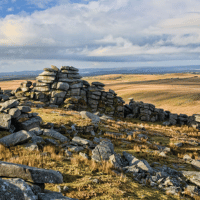
2. Fishing Villages Of Cornwall
Fishing is an integral part of Cornwall’s culture and economy. That is why you can find a large number of picturesque fishing villages throughout the county. However, there are some among them that you should definitely visit on your trip.
Charlestown is one such village that you should not miss when visiting Cornwall. Located near the town of St. Austell in south Cornwall, this little fishing village was founded sometime in the 18th century. It has a port that was once used as a major trading and export hub. Also, there is a fascinating shipwreck treasure museum here that you need to check out.
Another village that you should visit is Port Isaac, which is situated on the north coast of Cornwall. It might seem a little busier than other villages in the county at first, but it has a scenic natural harbour and beautiful coastal views to die for! Additionally, you can take a hike on the south west coast path if you wish to exercise your legs.
Boscastle is another tiny village that is located on the north coast. This village is particularly popular for its natural harbour, which has a mesmerising ambience.
The last village that we will discuss here is Mousehole, which is located near Penzance in the southwest part of the Cornish coastline. This village has been an important fishing location ever since it was founded in the 14th century. On that note, its scenic beauty, local shops and pale sandy beach are something that you should definitely experience

3. Tintagel Castle
Tintagel Castle is the perfect destination for those who are fascinated by castles and historical legends. Situated on the northern coast of Cornwall in the village of Tintagel, it is believed to be closely associated with the legend of King Arthur.
There are a number of Victorian-era poetry and writings that reinforce this fact. All of these aspects grant a mystical aura to this mediaeval castle.
Even if you don’t believe in legends, it is well worth visiting since the surrounding views are pretty amazing too. It has a minimal entry fee unless you are a member of English Heritage, which is the organisation that maintains the castle. In that case, your entry will be absolutely free of cost.
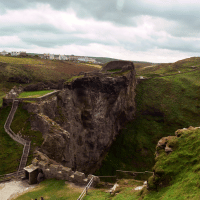
4. Eden Project
Eden Project is one of the biggest ecotourism attractions in Cornwall. It consists of a number of overlapping geodesic domes forming two giant enclosures that cover an area of around four acres.
The bigger enclosure houses an expansive tropical biome on a small scale, while the smaller enclosure houses a temperate biome. You’ll find a large variety of tropical and temperate plants and an artificial waterfall, which is truly a sight to behold! Also, there are a ton of activities and other attractions here that will keep you and your family engaged for the whole day.

5. The Lizard Peninsula
If you travel to the southern part of the county, you will come across the iconic Lizard Peninsula and the Lizard Heritage Coast area. This area has several beautiful beaches and coves, as well as hiking trails and picturesque coastal walks, which should satisfy the nature lover in you.
When visiting the Lizard Peninsula, you should not miss the Lizard Point, as it is the most popular tourist attraction in this region. It is the southernmost point of mainland Britain and offers a breathtaking view of the Atlantic Ocean.
You can also visit the Lizard Wireless Station at Bass Point and the Marconi Centre while you’re here. If you are keen on learning about the history of wireless broadcasts and radio, these places will definitely interest you.

6. St. Michael’s Mount, Marazion
Moving northward from the Lizard Peninsula will bring you to the town of Marazion, from where you can visit St. Michael’s Mount. This island can be accessed via a granitic causeway when the tide is low.
It is home to a magnificent mediaeval-era castle and church. In fact, it was built by the same order of monks who were responsible for developing the iconic Mont St. Michel church and abbey in France. Even the names are the same, which provides further proof of this aspect.
In addition to the island, you can visit the sandy beach at Marazion, which is a very popular destination among tourists.

7. Cornish Mines
Mining activities are also a major part of Cornish culture besides fishing. And while most of the mines have been closed down today, they have been turned into museums to showcase Cornwall’s rich mining heritage.
In fact, the entire Cornwall and Devon mining landscape has been declared a UNESCO world heritage site. There are over 2,000 such mines in this area, most of which were involved with Tin mining.
The largest and most popular one, however, is the Geevor tin mine and museum, which is located in the St. Just mining district. If you are interested to know more about the mining culture of Cornwall, then you have to visit this place.
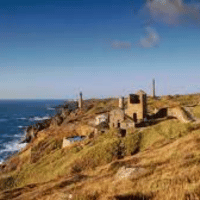
8. Land’s End
Land’s End is another popular tourist attraction in Cornwall, and it is the most westerly point in England. In our opinion, any trip to Cornwall feels incomplete without visiting Land’s End and Lizard Point, which we have discussed before.
Situated a few miles away from the Town of Penzance, Land’s End is a relatively busy tourist spot. After all, it provides a stunning view of the coastline and the majestic Atlantic, which is why tourists flock here in droves. So, if you do not mind a bit of a crowd, you can head here directly after visiting Geevor tin mine or Mousehole.
After Land’s End, you can visit Cape Cornwall or one of the sandy beaches nearby. You can also explore the small coastal village of Sennen Cove, which is equally breathtaking.
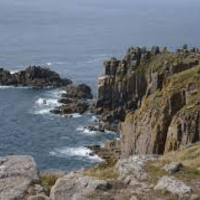
9. Cornwall Beaches
When it comes to beaches, you are literally spoiled for choice in Cornwall. There are numerous spectacular beaches scattered along the Cornish coast, with each having its distinct charm.
However, if you want to visit the best beaches in Cornwall, then you have to visit Newquay in north Cornwall. There are a number of glamorous beaches here, such as Fistral Beach, Watergate Bay, Tolcarne Beach and many more. Here, you can participate in a variety of watersports and experience Cornwall’s thriving beach culture firsthand.
Aside from Newquay, you can visit the beaches in Perranporth and St Ives Bay if you have time. In these locations, you will come across some famous beaches like Perran Sands, Porthmeor Beach and Gwithian Beach.
You will find great beaches on the south coast as well, such as Porthcurno Beach, Praa Sands and others. In short, Cornwall is the perfect destination for beach lovers.

10. Hikes in Cornwall
Besides its beaches, Cornwall offers a plethora of hiking opportunities to its tourists too. You’ll find both coastal and inland hiking trails where you can go for either a casual walk or a multi-day hike.
On that note, you should definitely consider hiking along the South-West Coastal Path, which is possibly the longest and best hiking trail in the UK. It has a length of around 630 miles and covers the coastline of four different counties – Somerset, Devon, Cornwall and Dorset. This means it stretches along the Cornish coast, making it a must-visit for hikers.
Of course, you can’t cover the whole trail in seven days, which is why you can go hiking on one of the smaller sections of this coastal path. Believe us – the sights you’ll see while strolling through the trail will be absolutely stunning!

How To Get Around In Cornwall?
Now that the itinerary has been decided, it is time to address another important question – how can you get around in the county? Well, there are a few approaches that you can take here, such as driving, taking public transport or guided tours.
But if you want our opinion, we’d suggest that you drive around on your own. A Cornwall road trip itinerary offers the highest levels of flexibility and freedom, which won’t be possible if you opt for the other methods of getting around. If you drive around in your private vehicle, you can squeeze in a lot of other locations in the itinerary on top of the ones mentioned above.
However, if you want to travel on a budget, then you can opt for public transport like buses, trains and taxis. Although it’s not as flexible as driving around on your own, you can visit all the above-mentioned places via bus or train. If you wish, you can even visit some additional locations, like Falmouth, Lanhydrock, the Lost Gardens of Heligan and others, through public transport.
Lastly, you have guided tours where you will be taken to a few fixed locations by a professional tour operator. Such tours are cheap and convenient since you don’t have to do or plan anything by yourself. That said, it is not as flexible as the previous two methods.
Conclusion
So, that was our itinerary for spending a week in Cornwall. It covers some of the most important tourist spots in the most efficient and affordable manner possible, which makes it the ideal plan for a seven-day visit.
In that context, you won’t have to worry too much about accommodation since most of these locations have good lodging facilities available at different price ranges.
That said, the ideal time to plan a trip to Cornwall would be the late spring and summer months. That way, you can experience Cornwall in all of its glory!
However, if you want to avoid crowds, you can visit during the autumn and winter as well. Just make sure to dress appropriately, and grab a cornish pasty for it can get a bit chilly and windy in some parts.
About The Author

Reviewed by
Editor
Related Posts
[wp post shortcode here]

